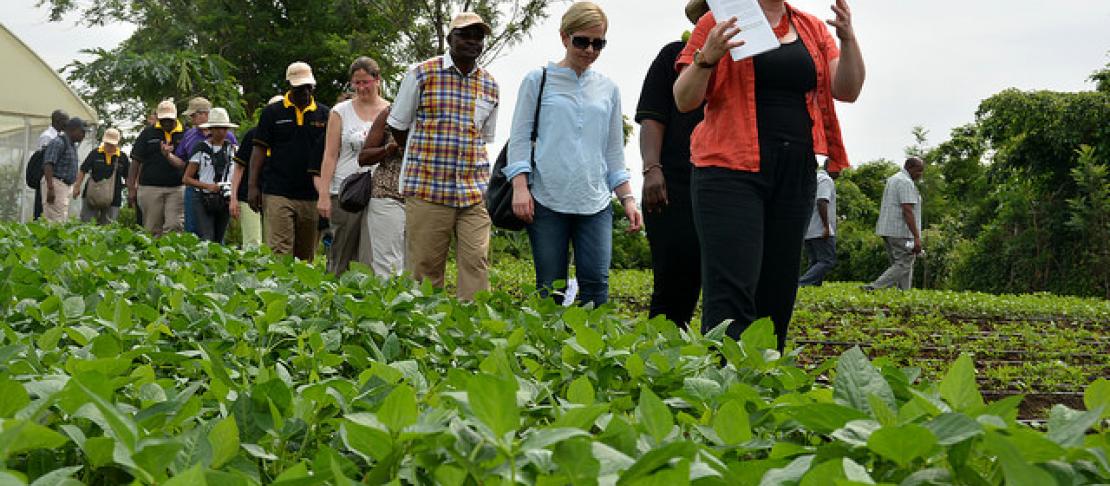Future farms need homegrown science

Capacity for research and development begins at home. But stressing the need for local innovation is not a call for divestment elsewhere.
“Mind-blowingly underfunded” is how Bill Gates recently described research [1] to improve resilience of crops to climate change. For anyone weighing up smart investments to improve adaptation and mitigation after the COP21 negotiations, improving agricultural research capacity is a strong bet, argue Ademola Adenle, Hossein Azadi and Joseph Arbiol in their article Global assessment of technological innovation for climate change adaptation and mitigation in developing world [2].
Adenle and co-authors quantify the state of play in four areas of research and development (R&D) that they consider critical to agriculture under climate change: soil management, information and communication technologies (ICT), renewable energy, and biotechnology.
The authors expose major inequalities in scientific capacity. Despite huge untapped potential to raise soil carbon in tropical countries [3], 60% of research papers on integrated soil management practices come from Europe and USA, compared to 8% from Africa and 6% from Latin America. ICT tools like remote sensing to support precision agriculture have great potential too, but there are basic disparities in accessibility. For example 43% of people in East Asia have regular access to the internet, compared to only 6% in South Asia.
Solar is one example of a renewable energy that can both support climate adaptation among low-income farmers and deliver low emissions development. Again R&D is concentrated in high-income countries – Japan holds 41% of solar patents, USA 19% – though promisingly capacity is emerging in Africa, where South Africa and Kenya now account for 1.5% of global patents. Finally, turning to biotechnology, the authors see great potential for crop genetic modification to tackle climate change. They also argue that the lack of scientific capacity on biotech in sub-Saharan Africa is a dangerous barrier to effective regulation of genetically modified organisms in these countries.
So what can we do? Adenle and colleagues are full of ideas on how best to build homegrown innovation to fight climate change. New ways to transfer intellectual property rights and provide financial incentives are key. For example, governments could auction emissions permits and use the public funds to finance research that improves farmers’ capacity to adapt.
Both public and private sector R&D will fare much better if they build on local knowledge and priorities: analysis of 100 biomass gasification CDM projects in rural India [4] showed greater benefits when community organisations were active partners. Also, as Adenle’s article emphasises, technologies alone are not enough. It will take a team effort to fight climate change impacts on agriculture [5] needing investments – and associated research – on infrastructure, markets and public services.
Capacity begins at home – that’s the central message. But putting priority on local innovation does not mean we should divest from R&D elsewhere. On the contrary, Adenle and co-authors urge maximum funding of practical climate-relevant research globally. Governments in high-income countries could provide incentives, such as favourable tax treatment or access to additional funds, for private and public sector researchers to undertake R&D in low-income countries with local partners. A shift from “technology transfer” to “technology teamwork” may give us the strongest hope for post-2015 food security.
References
[1] Clark P 2015. Bill Gates calls for rethink on climate change cash. Financial Times 22 October 2015.
[2] Adenle A A, Azadi H and Arbiol J 2015. Global assessment of technological innovation for climate change adaptation and mitigation in developing world. Journal of Environmental Management 161: 261-275.
[3] Website: COP21 side-event and launch of the "4 per 1000 Initiative"
[4] Subbarao S and Lloyd B 2011. Can the Clean Development Mechanism (CDM) deliver? Energy Policy 39: 1600-1611.
[5] Campbell B 2015. Agriculture needs a true team effort to beat the climate change odds. Letter to the Financial Times.
This is the December 2015 edition of AgClim Letters, a regular analysis on science and policy written by Sonja Vermeulen, Head of Research for CCAFS. Sign up to receive AgClim Letters e-bulletin and read past editions. Your comments are welcome below.
